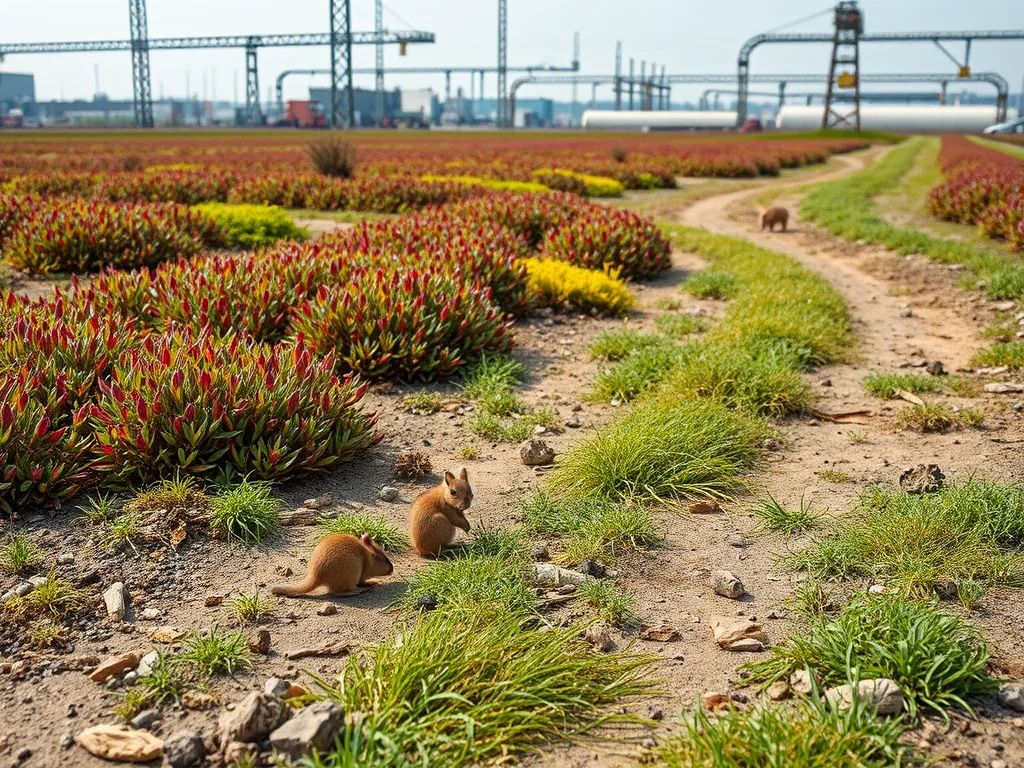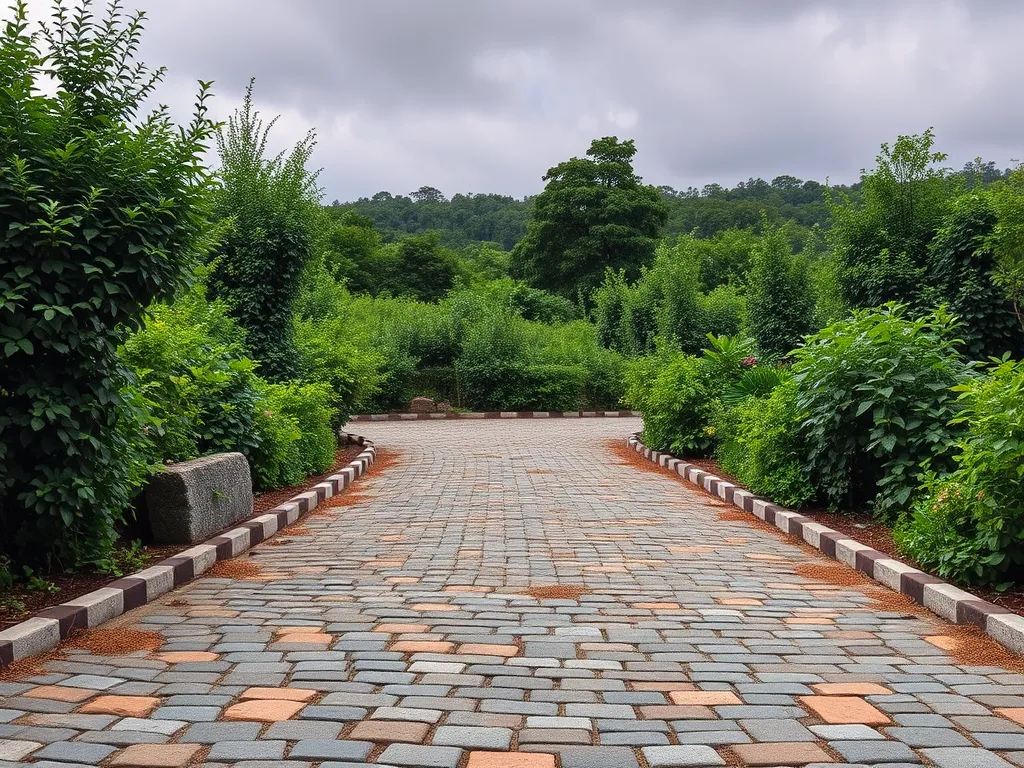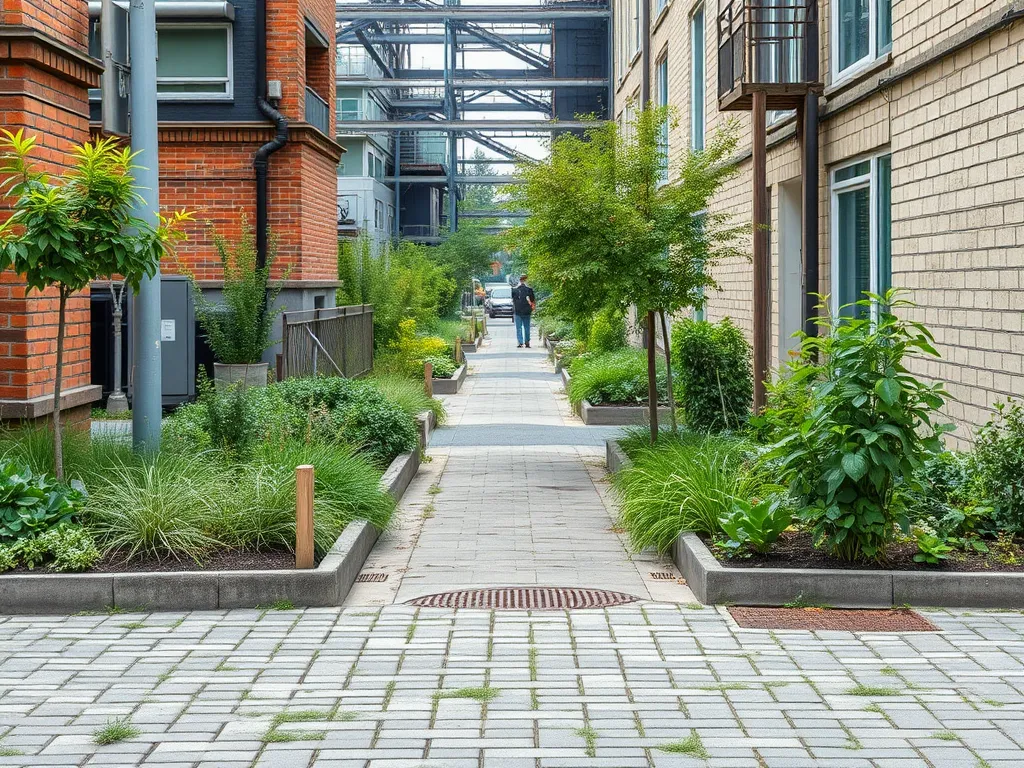How Asphalt Driveways Shape Communities and Local Ecosystems
Published on: October 24, 2025 | Last Updated: April 14, 2025
Written By: George Voss
Asphalt driveways impact local ecosystems by altering heat patterns, water drainage, and wildlife habitats while providing communities with durable paved surfaces. These driveways contribute to the urban heat island effect (a 2-5°F temperature rise in developed areas), increase stormwater runoff by 50-70% compared to natural ground, and fragment green spaces critical for local species. Residents often balance practical needs like low-cost paving ($3-$5 per square foot installed) against environmental concerns like soil erosion and habitat loss.
This article examines both sides: how asphalt benefits neighborhoods through noise reduction and longevity (15-20 year lifespan), and its ecological risks like contaminant runoff into streams. We’ll explore solutions like permeable asphalt (allowing 500+ inches of water per hour to drain) and recycled millings (95% reuse rate), plus data on long-term sustainability. Topics include heat mitigation strategies, drainage innovations, and balancing development with ecosystem health.
Contents
Benefits Of Asphalt Driveways in Communities
Asphalt driveways offer practical advantages that extend beyond individual properties. These benefits shape neighborhood dynamics while influencing interactions with nearby natural systems.
Durability and Cost-effectiveness
Asphalt driveways last 15-20 years with proper care, outlasting gravel by 3x. This longevity reduces material consumption for replacements. Fewer reconstruction projects mean less habitat disruption from construction equipment and aggregate mining. At $2-$5 per square foot installed, asphalt costs 30% less than concrete, letting communities allocate funds toward green infrastructure like stormwater basins or native plant buffers.
Reduced Noise Pollution
Asphalt’s dense surface absorbs tire noise, creating 3-5 decibel reductions compared to concrete. Quieter neighborhoods help local fauna maintain natural communication patterns—critical for species like songbirds during mating seasons. Lower noise levels also decrease stress hormones in urban wildlife populations near residential areas.
Low-maintenance Surfaces
Sealcoating every 3-5 years prevents cracks that could harbor invasive plant seeds. Minimal upkeep reduces chemical runoff—modern asphalt emulsions contain 20-35% fewer volatile organic compounds than 1990s formulas. Fewer pothole repairs mean less machinery exhaust entering ecosystems through air deposition.
While these features benefit communities, asphalt surfaces still create ecological pressures that demand proactive solutions. The next section examines key challenges for local ecosystems.
Negative Ecosystem Impacts Of Asphalt Driveways
Asphalt driveways shape local landscapes but carry hidden costs for nature. Let’s break down their ecological toll.
Urban Heat Island Effect
Dark asphalt absorbs 80-95% of sunlight, unlike grass or soil. This heat build-up alters local climate patterns.
Temperature Increases in Localized Areas
Asphalt surfaces can reach 120-150°F on summer days. Air temps near driveways rise 2-5°F above nearby green zones. These spikes stress cooling systems and boost energy use.
Impact on Plant and Animal Species
Native plants like milkweed and goldenrod struggle in heat-zoned areas. Pollinators such as bees face 15% faster dehydration rates near paved surfaces. Ground-nesting species lose safe zones.
Stormwater Runoff and Drainage Issues
Every 1,000 sq ft of asphalt sends 27,000 gallons of rainwater rushing offsite yearly. Natural soil soaks up just 0.5 inches per hour versus asphalt’s zero absorption.
Contaminant Transport into Ecosystems
Runoff carries motor oil, brake dust, and road salts into streams. A single driveway can leak 0.25 gallons of oil yearly into water systems. De-icing chemicals raise chloride levels in soil by 30% within 10 feet.
Soil Erosion Risks
Fast-moving water strips 2-3 inches of topsoil annually from adjacent unpaved areas. This loss removes nutrients needed by trees and shrubs, weakening root structures.
Habitat Fragmentation
Driveways act as barriers in once-connected landscapes. A 12-foot-wide paved strip cuts wildlife movement by 40% for species like box turtles and salamanders.
Disruption of Wildlife Corridors
Deer paths and frog migration routes get blocked. Studies show 22% fewer small mammal crossings in areas with dense paving versus natural ground cover.
Reduced Green Space Connectivity
Each paved surface shrinks pollinator habitats. Bees need at least 1 acre of linked green space—driveways split these zones, lowering plant diversity by up to 35% over 20 years.
While these impacts are real, new methods exist to build driveways that work with nature. Let’s explore solutions next.

Mitigating Asphalt Driveway Environmental Effects
While asphalt driveways affect local ecosystems, strategic approaches can reduce harm. Three methods balance community needs with environmental protection.
Using Recycled Asphalt Materials
Recycled asphalt pavement (RAP) cuts landfill waste by 90% compared to new asphalt. RAP blends milled asphalt chunks with fresh PG binders (performance-graded petroleum products). This method lowers energy use by 56% during production and reduces greenhouse gas emissions by 1.5 tons per 100 sq. ft. driveway. Local governments in 28 states now allow up to 30% RAP mixes for residential projects.
Permeable Asphalt Pavement Solutions
Permeable asphalt contains open-graded aggregates that let water pass through at 300-800 inches per hour. A 500 sq. ft. permeable driveway can absorb 500+ gallons of stormwater annually, reducing runoff pollution by 70%. Installations require 4-6 inch crushed stone bases to filter oil residues and heavy metals. Though costs run $8-$12 per sq. ft. (20% higher than traditional asphalt), lifespan extends to 25+ years with proper maintenance.
| Feature | Permeable Asphalt | Traditional Asphalt |
|---|---|---|
| Runoff Reduction | 80-90% | 15-25% |
| Installation Cost | $8-$12/sq. ft. | $4-$8/sq. ft. |
| Lifespan | 20-25 years | 15-20 years |
Integrating Green Spaces and Buffers
Bioswales or native plant strips along driveway edges capture 45% more runoff than paved edges. Vegetated buffers with species like switchgrass or black-eyed Susans absorb 3x more water while creating habitats for pollinators. Communities in Maryland’s Chesapeake Bay watershed mandate 5-foot vegetative buffers for driveways exceeding 800 sq. ft. These zones also cool surfaces by 9°F, countering urban heat effects.
These strategies show how asphalt driveways can coexist with healthy ecosystems. Next, we’ll examine long-term ecological footprints across asphalt’s lifecycle.
Also See: Asphalt Type Selection Guide: Choosing the Right One
Environmental Impact Analysis Of Asphalt Driveways
Production of paved surfaces requires balancing human needs with ecological stewardship. Let’s break down key factors influencing sustainability.
Long-term Ecological Footprint Of Asphalt Production
Producing paved surfaces involves energy-intensive processes. Bitumen refining emits greenhouse gases—roughly 0.05 tons of CO2 per ton of material. Nationwide, yearly emissions exceed 275 million tons. Extraction of resources like crushed rock disrupts habitats, while production sites near residential zones contribute to localized pollution. Over decades, these cumulative effects strain local ecosystems by degrading soil quality and fragmenting wildlife territories.
Assessing the Eco-friendliness Of Asphalt Options
Permeable pavement allows up to 500 gallons of stormwater per minute to seep into soil, reducing runoff contamination. Warm-mix technologies lower production temperatures by 50°F, slashing fuel consumption by 20%. Mixes containing 30-40% recycled content minimize bitumen use while maintaining structural integrity. Third-party certifications like LEED or SITES provide measurable benchmarks for eco-friendly choices, helping communities select materials that meet both budgetary and ecological goals.
Role Of Asphalt Millings in Sustainable Practices
Recycled millings reuse 95% of existing paved surfaces, diverting 90 million tons of waste from landfills yearly. Repurposing millings cuts energy use by 21% during production compared to virgin materials. When used for driveways, millings lower costs by 25% while resisting erosion better than traditional mixes. Communities adopting millings support circular economies, turning old roads into new infrastructure without depleting finite resources.
Next, let’s explore how residents and contractors tackle pressing queries about minimizing paved surface effects on surrounding environments.

Frequently Asked Questions (FAQ)
What Are the Long-term Effects Of Asphalt Driveways on Local Wildlife?
Asphalt driveways can significantly affect local wildlife by fragmenting habitats and disrupting migration patterns. Species that rely on natural corridors for movement may find it challenging to navigate paved areas, which can lead to reduced populations. Additionally, temperature increases and habitat loss can further threaten local biodiversity.
Can Asphalt Driveways Contribute to Water Quality Issues?
Yes, asphalt driveways can contribute to water quality concerns. Stormwater runoff from these surfaces often carries contaminants such as oils, heavy metals, and chemicals that have accumulated on the pavement. This runoff can pollute nearby streams and rivers, harming aquatic life and degrading water quality.
What Alternatives Exist to Traditional Asphalt Driveways for Minimizing Environmental Impacts?
Alternatives to traditional asphalt driveways include permeable pavement systems that allow water to filter through, reducing runoff and improving groundwater recharge. Other options are gravel driveways, which encourage natural drainage and promote biodiversity, and using recycled materials to limit resource depletion.
How Does Climate Change Affect the Sustainability Of Asphalt Driveways?
Climate change may affect the durability and efficacy of asphalt driveways. Increased temperatures can accelerate aging and cracking, leading to more maintenance issues and environmental disruption. Additionally, changing precipitation patterns could exacerbate runoff problems, highlighting the need for more sustainable paving solutions.
What Community Actions Can Be Taken to Mitigate the Negative Effects Of Asphalt Driveways?
Communities can take several actions to mitigate the negative effects of asphalt driveways, such as promoting the use of permeable pavement, increasing vegetative buffers, and encouraging the integration of green spaces. Educational initiatives on the ecological impacts of traditional asphalt can also help raise awareness and drive sustainable practices within the community.

Closing Thoughts
Asphalt driveways play a significant role in shaping communities. They provide durable, cost-effective solutions for parking and access while offering some benefits, such as noise reduction and low maintenance. Yet, these advantages come with notable environmental challenges, including the urban heat island effect, stormwater runoff issues, and habitat fragmentation.
Mitigation strategies, such as using recycled materials, exploring permeable pavement options, and integrating green spaces, can lessen the negative impacts on local ecosystems. Communities can strike a balance between functional infrastructure and environmental stewardship. By carefully considering these aspects, towns can create sustainable pathways that support both local needs and ecological health.
For more information on asphalt and its impact on communities, check out Asphalt Calculator USA.
Additional Resources for You:
- Lavin, P. (2003). Asphalt Pavements: A Practical Guide to Design, Production, and Maintenance for Engineers and Architects. London: Taylor & Francis.
- Are Asphalt Driveways Environmentally Friendly? | J&W Asphalt Blog
- The Environmental Impact Of Asphalt: The Shocking Truth


